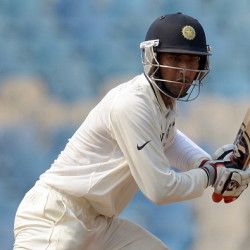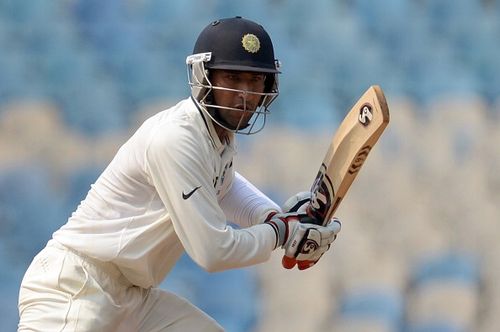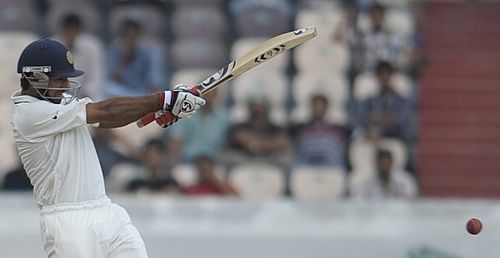
Cheteshwar Pujara - Should he be included in the Indian ODI squad?

Cheteshwar Pujara
There are many cricketers that you would associate with attractive, glorious and attacking cricket in the current Indian cricketing scene but there are rarely people that you would associate with solidity and technique.
The Indian ODI batting lineup for the South African challenge sure has fluidity, strength and all the shots in the book, but from the recent performance of the batsmen except the Indian captain M.S Dhoni in the rainbow nation, all of these have come under the scanner. The only thing that the Indian batsmen perhaps lack is the experience and the skill to play in bouncy conditions. Not surprisingly, the fiery Proteas pace battery comprising of Dale Steyn, Morne Morkel, Lonwabo Tsotsobe have not failed to exploit these shortcomings of the Indians.
The only batsman that has stood up to the challenge has been M.S Dhoni who may not have the technique but sure has a lot of experience both batting as well as leading in the side in such conditions. But everybody knows that cricket is a team sport and an individual can only do so much to save the ship. And perhaps for that very reason we need the 25-year-old young gun Cheteshwar Pujara.
Pujara- so close yet so far
Pujara is a batsman who has scored mountains of runs in the domestic arena as well as in the short span of his international career. He has a consistent average of 65.5 in Test matches and an average of 61.8 in first class cricket to compose a total of around 8200 hundred runs at this very tender age.
Despite all of this, he has not been taken into consideration for selection in the ODI side. He was first selected in the ODI series against England but did not get a game because of injury. When finally, he got his first game against a relatively weaker Zimbabwe side, it proved to be quite a hapless start to his ODI career as he managed a meagre total of 13 runs in the two matches he played – much unlike his strikingly shining List-A career where he averages 54.57.
Not surprisingly, he was retained for the Test series against West Indies as well as South Africa but dropped from the ODI team because of his lack of performance in the two matches that he played. Many cricket pundits welcomed this decision as they believed Pujara to be a safe bet in Test side but not as suitable for the ODI.
Indian Batting -2013
In the home series against Australia the Indian batsmen showed that for them no total put up by the opposition is unconquerable. 2013 indeed has been a golden year for Indian ODI cricket as India has won 5 out 6 series one of which was the Champions Trophy played in the seaming English conditions. India’s good showing throughout the tournament silenced many critics who believed that Indians could not face the conditions outside of the subcontinent. The claim however, is again gaining mileage with the ongoing series against South Africa.
The famed Indian batting line-up is not looking as dangerous as they looked while putting up and chasing totals of around 300 in the home series against Australia. Not too long ago, every ball seemed to hit the sweet spot and even the mishits and faint edges crossed the boundary. Nothing ever seemed to go wrong.
Therefore, this series presents a stark contrast where the same Indian batsmen are found fanning the air with the bat searching for the ball which somehow always manages to go past the edges or in the worst case through the gate between the bat and pad. What causes more misery is the seeming permanence of India’s shortcoming against the short-pitched delivery. This problem never ceases to exist and this gives all the more reasons for the South African bowlers to pepper the opposition with such deliveries and embarrassing taunts like “they didn’t seem they wanted to line-up against us”.

Cheteshwar Pujara
Need for Pujara’s Inclusion
The selection of Pujara in such a situation thus, might have proved to be just the thing that India needed at the moment. Pujara has not got much opportunity to play ODI’s in foreign conditions and judging him from the mere two matches that he played is quite unfair to a lad who was the highest scorer of the India A team that toured England in 2010. Given the fact that Rohit Sharma was given a long rope by the selectors as well as the captain alike despite his inconsistent showing in the ODI format, Pujara deserves a chance to showcase his ability.
Pujara has been called a successor of the Rahul Dravid school of batsmanship which represents solidity, technique, temperament and classy shot-making as its core and essential components. Although MS Dhoni insists on maintaining individuality and discourages the media to compare the new players with old ones as that would mean putting unnecessary pressure on them, but given the way that Pujara plays and the sense of security that he gives to the dressing room and the fans alike, one cannot help but draw parallels between the legend and the newbie.
In India, where there are flat wickets and pitches without a shade of green, the top order rarely struggles to settle down and hence can play shots from the first over itself. But in conditions like South Africa, where the the top order requires to see through the first few overs and try and fathom the conditions, they are often found to be guilty of lacking patience and not curbing their shot-making instinct.
Therefore, Pujara at the number three position would help India to build, guide and pace the innings to perfection. He is the combination of temperament, calmness and patience that the Indian top order is failing to display at the moment. He is a batsman with the classy shots as well as the very handy forward defensive stance which many of the subcontinent batsmen fail or forget to apply in such hostile conditions.
Thus, a batsman of such calibre should not be ignored as what is required for the drowning Indian ship is a player who will put a price on his wicket, and force the bowlers to snatch it from him rather than throw it away himself. And nothing is more irritating for an opposition than an adamant and untiring batsman. Pujara might be just that person. The only thing that is required is ensuring that ability meets opportunity and it is time that the selectors start facilitating the same.